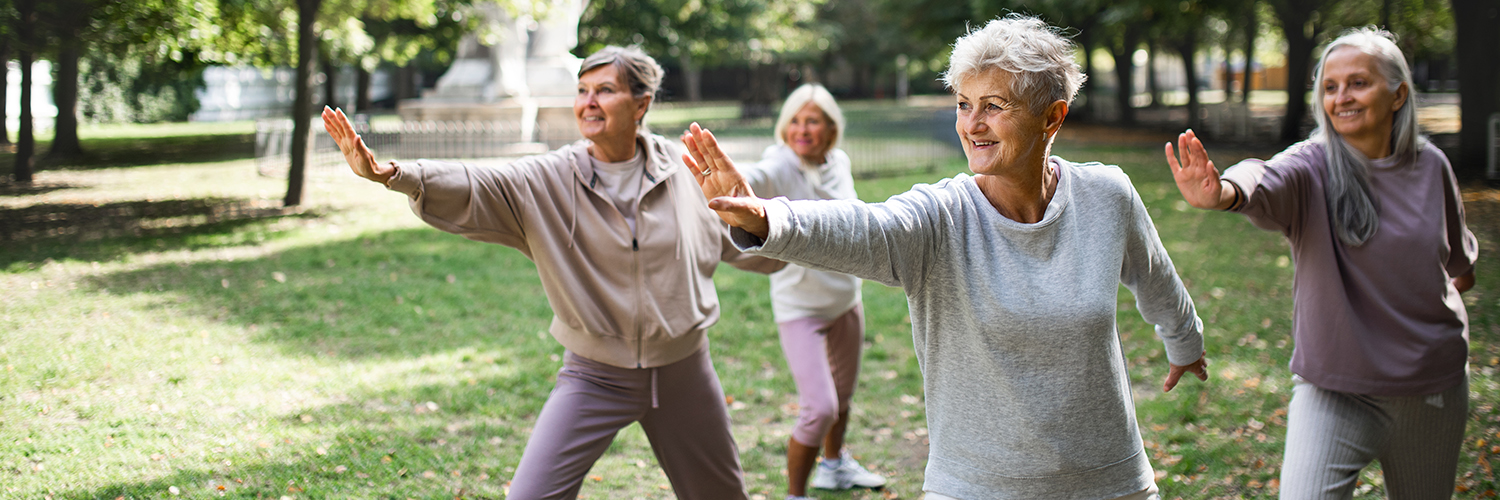If you’re currently less active than you’d like to be, starting an exercise routine might feel overwhelming. However, with the right approach, exercising can be both achievable and enjoyable, no matter your age.
Whether you’re looking to improve your overall health, build strength or reduce stress, this FAQ guide for those new to exercising covers everything beginners need to know to kickstart their fitness journey safely.
How Should a Beginner Get Started With an Exercise Routine?
First and foremost, it’s best to get medical clearance from your primary care provider before starting a new type of exercise, especially if you have any existing health conditions. After your provider gives you the green light, keep these tips in mind:
- Start slow: Begin with low-impact activities like walking or light stretching, and gradually increase your intensity and duration as your body adjusts.
- Set realistic goals: Focus on small, attainable milestones at first, like walking for 10 to 20 minutes a day, and then build from there.
- Find an exercise buddy: Working out with a friend or trainer can help keep you motivated and make exercise safer and more fun.
How Often Should You Exercise?
Organizations including the American Heart Association recommend adults get at least:
- 150 minutes of moderate-intensity aerobic exercise (such as walking, cycling and swimming) per week, or
- 75 minutes of vigorous exercise (like running or high-intensity interval training per week).
- This amount translates to about 30 minutes of exercise, 5 days per week, or a little more than 20 minutes per day.
Keep in mind that you don’t have to do long or very strenuous workouts to see results. Even short bursts of activity throughout the day are better than being sedentary. Small steps, like taking the stairs, walking further to do errands, or taking short walks around your neighborhood all add up.
What Should Your Workout Routine Look Like?
A balanced workout routine incorporates different types of exercise to keep things interesting and well-rounded.
Here are the key components of an exercise routine:
- Type: Aerobic, strength training or stretching
- Intensity: Can be measured by your heart rate or exertion level
- Frequency: Number of days per week
- Duration: Length of each workout session
For the greatest strength and cardiovascular benefits, aim to switch up your workouts throughout the week. Here’s an example of an exercise schedule to shoot for:
- Aerobic exercise: 3-5 times per week (such as walking, swimming or cycling)
- Flexibility and stretching: 2-3 times per week (like yoga, pilates or static stretches)
- Resistance training: 2-3 times per week (such as bodyweight exercises, bands or lifting weights)
- Coordination and balance: Exercises like Tai Chi, yoga, standing on one leg or agility drills can help improve balance and prevent falls. Activities like yoga and Tai Chi are great for people of all ages because they combine flexibility, strength, coordination and balance all into one session.
What At-Home Exercises Do You Recommend?
You don’t need a gym to get fit! There are plenty of ways to stay active at home, which has the added benefit of being flexible in terms of timing while being very low cost.
Exercises that you can do just about anywhere include:
- Walking: Take walks around your neighborhood or in a nearby park, beach, mall, etc.
- Riding a bike: Cycle around your neighborhood or town
- Stair climbing: Use stairs inside or outside for low-impact cardio
- Bodyweight exercises: Try sit-to-stands from a chair, planks, squats or standing on one leg to improve strength and balance
- Resistance exercises: Use resistance bands, weighted balls or light cuff weights for added strength training
Experiment with different types of exercises to find what you enjoy most, which can make it much easier to stick with your routine long-term.
Are There Any Specific Exercises You Should Do for Better Health?
Yes—a balanced fitness plan ideally includes a mix of aerobic, strength, flexibility and balance exercises, each of which has different benefits for your health.
Here are some of the main benefits of each type of exercise:
- Walking: Walking is an accessible and effective form of aerobic exercise that strengthens your heart and improves circulation. Getting outside to walk in the sun and fresh air is also a powerful way to fight depression, get better sleep and even improve your cognitive health (such as your memory and creativity).
- Resistance training: This strengthens muscles, supports healthy bones, and helps with mobility, stability and daily tasks.
- Mind-body exercises: Exercise not only strengthens your heart and muscles, but also supports brain health by reducing stress, anxiety and depression. For example, yoga and Tai Chi are mind-body exercises that can improve your sense of well-being while also improving flexibility.
- Group fitness classes: Staying socially active through group fitness classes or workout buddies can improve your mood and mental health, in addition to your strength and endurance.
How Can Seniors Exercise Safely?
Exercise is important at every age, but seniors should take these extra precautions to stay safe:
- Get medical clearance: Consult your physician before starting a new routine.
- Join a group or find a buddy: Working out with others can make exercise safer and more enjoyable.
- Consider physical therapy: If you need help developing a safe routine, ask your provider for a referral to outpatient physical therapy.
- Explore community programs, such as those offered by Stony Brook, including:
- Tai Chi classes
- Otago programs (fall prevention classes that focus on strength and balance exercises, which can be practiced at home)
- “A Matter of Balance” classes
- Long Island Falls Free and Healthy Aging webinars
For additional support beginning a workout routine, contact Stony Brook Medicine’s team of experts. You can find more information about Stony Brook Medicine’s Falls Prevention programs here, or contact one of our experts:
- Kristi Ladowski, MPH (Injury Prevention & Outreach): 631-444-8385
- Brittany Gambini, MS, OTR/L (Falls Prevention Coordinator): 631-953-3454
In this episode of HEALTH, Yeah!, experts from Stony Brook Medicine cover some of the more common resolutions and goals that people set for themselves in the new year, including more physical activity, and how to achieve and maintain success.












